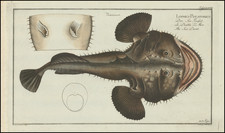Felis Onca, Linn. The Jaguar Female, lithographed by J. T. Bowen in Philadelphia in 1846, captures a detailed image of a female jaguar. Sketched from life by John James Audubon, the lithograph exquisitely portrays the jaguar in a posture of subtle aggression, emphasizing her teeth and the visible claws on her left foot. The backdrop of a copse of trees further illuminates the jaguar's natural habitat, suggesting this magnificent creature's grandeur and wild allure.
Audubon's related notes offer a comprehensive overview of the jaguar's appearance, behavior, and habitat, indicating its presence from Texas to parts of Central and South America. He references its locales near the Rio Grande and the Nucces and its extension to regions beyond El Paso. He notes the jaguar's absence from places like Oregon and California.
In the United States, the jaguar, historically, once roamed expansively across the Southwest and even further into states like California, Texas, and Louisiana. The territories along the U.S.-Mexico border, particularly areas near the Rio Grande, served as prime habitats for these apex predators. Over time, however, with westward expansion, habitat fragmentation, and targeted hunting due to livestock conflicts and fur trading, the jaguar's range dramatically receded. By the mid-20th century, sightings in the U.S. became exceedingly rare, and the jaguar was pushed predominantly into Central and South America. Efforts in recent decades focus on conservation and potential reintroduction, with sporadic sightings in Arizona and New Mexico offering hope for a tentative return of this majestic creature to its former range.
The Viviparous Quadrupeds of North America: Imperial Folio Edition
John James Audubon, best known for his groundbreaking work The Birds of America, embarked on another ambitious project in the later years of his life: documenting the mammals of North America. This endeavor culminated in the creation of Viviparous Quadrupeds of North America, a substantial and influential work that delved into the diverse world of North American mammals with the same depth and artistry that had made his bird illustrations legendary.
John James Audubon (1785-1851), born Jean-Jacques Rabin in Haiti on April 26, 1785, was a Franco-American ornithologist, naturalist, and painter, celebrated for his detailed illustrations of North American birds in their natural habitats. His major work, a color-plate book titled The Birds of America, is considered one of the finest ornithological works ever produced.
Audubon's early years were shaped by tumultuous events. Born out of wedlock in the French Caribbean colony of Saint-Domingue (now Haiti) to a Creole mother and a French sea captain, he was smuggled to Nantes, France, during a slave rebellion. There, he was adopted by his father and stepmother and raised as their own. His childhood in France was filled with outdoor adventures and initial forays into drawing.
In 1803, to avoid conscription into Napoleon's army, he was sent to America, where he managed one of his father's estates near Philadelphia. This move further kindled his profound interest in the wildlife of the New World. Despite a few failed business ventures and challenges, Audubon remained committed to his passion for nature and art.
His dream to document all of the birds of America began to take form in the 1810s. Travelling through America's wilderness, Audubon observed, hunted, and painted birds. He developed a particular technique that involved wiring freshly killed birds into a natural pose on a board. This innovative method combined with his keen observation allowed him to create more lifelike illustrations than many of his contemporaries.
Failing to secure American subscribers or a publisher for his extensive collection, Audubon traveled to the United Kingdom in 1826. There, The Birds of America was met with critical acclaim. Between 1827 and 1838, this work was published in sections, comprising 435 hand-colored, life-sized prints made from engraved plates.
Audubon followed this success with a companion work, Ornithological Biography, which provided detailed narratives about each species. His later work included studies of American mammals, and he became one of the founding members of the New-York Historical Society.
Despite facing numerous challenges throughout his life, including financial hardships and criticism from some peers, Audubon's dedication to his work resulted in an invaluable contribution to ornithology and American art. He died on January 27, 1851, in New York City. Today, his legacy continues, notably through the National Audubon Society, which promotes conservation and appreciation of birds and their habitats.









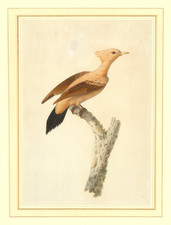
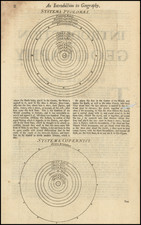
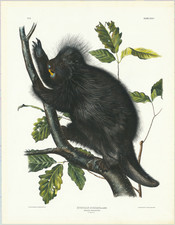
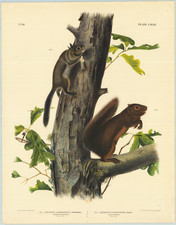
![[ Astronomer William Herschel ] Wm. Herschel](https://storage.googleapis.com/raremaps/img/small/99581.jpg)
